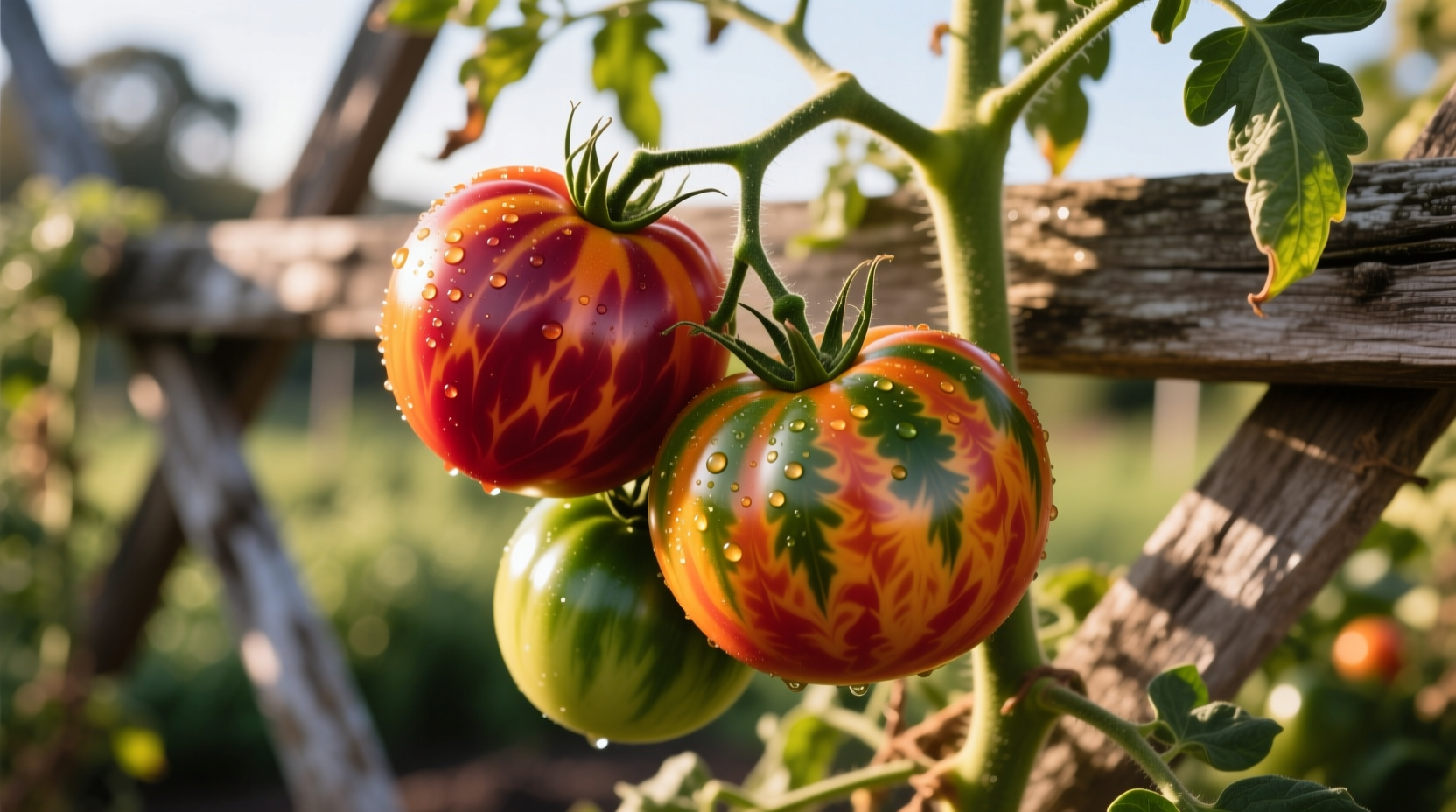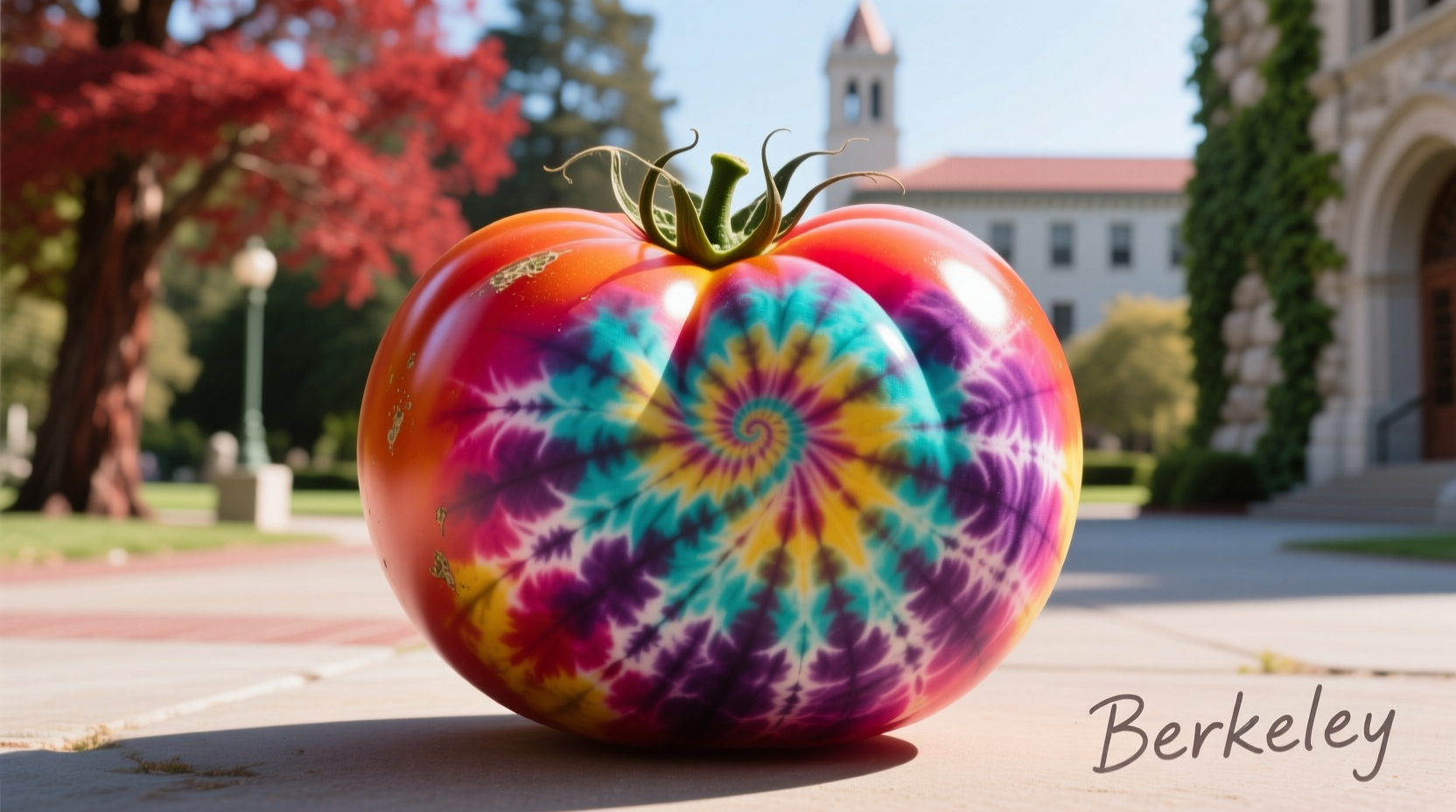Why Gardeners Are Raving About This Unique Heirloom
When you first encounter a Berkeley Tie Dye tomato on the vine, you'll understand why this variety has become a favorite among home gardeners and culinary enthusiasts. Unlike standard red tomatoes, these beauties display a mesmerizing pattern of red, yellow, and green streaks that resemble watercolor paintings. But this isn't just a pretty face—this tomato delivers exceptional flavor that balances sweetness with subtle earthy notes and just the right amount of acidity.

Your Step-by-Step Growing Success Path
Understanding What Makes This Variety Special
Berkeley Tie Dye tomatoes belong to the "tiger stripe" category of heirloom tomatoes, developed through careful cross-breeding to combine visual appeal with robust growing characteristics. Created by renowned tomato breeder Brad Gates of Wild Boar Farms, this variety made its debut in 2017 and has gained popularity for its reliable production and resistance to common tomato diseases including fusarium wilt and verticillium.
| Tomato Variety | Days to Maturity | Flavor Profile | Disease Resistance | Best Growing Conditions |
|---|---|---|---|---|
| Berkeley Tie Dye | 75-80 | Sweet with earthy complexity | Fusarium, Verticillium | Full sun, consistent moisture |
| Cherokee Purple | 80-85 | Rich, smoky sweetness | Moderate | Warm climates, well-drained soil |
| Brandywine | 80-100 | Classic tomato sweetness | Low | Cooler climates, ample space |
Starting Your Seeds for Maximum Success
Begin your Berkeley Tie Dye journey 6-8 weeks before your last expected frost date. These tomatoes require a head start indoors due to their longer growing season. Use a quality seed starting mix in 3-4 inch pots, planting seeds 1/4 inch deep. Maintain soil temperature between 70-80°F (21-27°C) for optimal germination, which typically occurs within 5-10 days.
Pro tip: When seedlings develop their second set of true leaves, transplant them into larger containers, burying the stem up to the first set of leaves to encourage stronger root development along the buried stem.
Transplanting and Garden Preparation
Before moving your seedlings outdoors, harden them off gradually over 7-10 days by increasing their exposure to outdoor conditions. Choose a sunny location with at least 6-8 hours of direct sunlight daily. Prepare your garden bed by incorporating 2-3 inches of compost and ensuring proper drainage.
Space plants 24-36 inches apart in rows 4-5 feet apart. Install sturdy trellising or cages at planting time—these indeterminate plants can reach 6-8 feet tall and require strong support. Unlike many heirlooms, Berkeley Tie Dye demonstrates impressive adaptability across various soil types, though it performs best in slightly acidic to neutral pH (6.2-6.8).
Watering and Feeding for Optimal Production
Consistent moisture is crucial for preventing blossom end rot and cracking. Water deeply 1-2 times weekly, aiming for 1-1.5 inches of water, preferably in the morning. Use mulch to maintain soil moisture and temperature. Begin fertilizing when first flowers appear using a balanced organic fertilizer every 3-4 weeks, or a tomato-specific formula with higher phosphorus content.
Unlike many heirloom varieties that struggle in cooler climates, Berkeley Tie Dye demonstrates remarkable resilience. According to the University of California Agriculture and Natural Resources, this variety shows excellent performance even in coastal California conditions where many tomatoes struggle with inconsistent sun exposure.
Harvesting at Peak Flavor
Watch for the characteristic marbling pattern to fully develop and the background color to shift from green to yellowish-red. The fruit should feel slightly soft when gently squeezed. Unlike standard red tomatoes that turn uniformly red when ripe, Berkeley Tie Dye maintains its distinctive streaking while reaching optimal ripeness.
Harvest in the morning when sugars are highest for the best flavor. These tomatoes typically reach 8-12 ounces each, with some specimens growing much larger under ideal conditions. Expect your first harvest approximately 75-80 days after transplanting.
From Garden to Table: Culinary Applications
Berkeley Tie Dye tomatoes shine in both raw and cooked applications. Their balanced flavor profile makes them exceptionally versatile:
- Caprese salad: The vibrant colors create stunning visual appeal alongside fresh mozzarella and basil
- Sauces and salsas: The natural sweetness reduces the need for added sugar in cooked preparations
- Grilled tomatoes: Their firm texture holds up well to direct heat
- Tomato tartare: The marbled appearance creates beautiful presentation in raw preparations
Chef Maria Rodriguez of the San Francisco Cooking School notes: "The Berkeley Tie Dye's complex flavor profile bridges the gap between standard red tomatoes and yellow varieties, making it my go-to for dishes where I want both visual drama and balanced acidity."
Preserving Your Harvest
While best enjoyed fresh, Berkeley Tie Dye tomatoes preserve well through:
- Freezing: Core and freeze whole for later use in sauces
- Canning: Process in a water bath for 45 minutes for whole or crushed tomatoes
- Drying: Slice 1/4 inch thick and dehydrate at 135°F for 8-12 hours
Unlike many heirlooms that can be finicky when preserving, Berkeley Tie Dye maintains its distinctive flavor through processing. The National Center for Home Food Preservation confirms that this variety's balanced pH makes it suitable for standard canning procedures without additional acidification.
Where to Find Seeds and Plants
Due to its growing popularity, Berkeley Tie Dye seeds are now widely available from major heirloom seed companies including:
- Wild Boar Farms (the original breeder)
- Seed Savers Exchange
- Baker Creek Heirloom Seeds
- Local nurseries specializing in heirloom varieties
When purchasing seeds, look for those packaged for the current year to ensure optimal germination rates. A standard packet (approximately 25 seeds) typically costs $3.50-$4.50, making this variety accessible to gardeners at all levels.
Common Challenges and Solutions
While Berkeley Tie Dye demonstrates better disease resistance than many heirlooms, gardeners may still encounter these issues:
- Blossom end rot: Prevent with consistent watering and calcium supplementation
- Cracking: Avoid irregular watering patterns, especially during fruit ripening
- Hornworms: Hand-pick or use BT spray for organic control
- Early blight: Remove affected leaves promptly and improve air circulation
Gardeners in humid climates should provide extra spacing between plants to prevent fungal issues. The variety's indeterminate growth habit means regular pruning of suckers will improve air circulation and direct energy toward fruit production.
Why This Variety Continues to Gain Popularity
Since its introduction, Berkeley Tie Dye has become one of the most sought-after heirloom varieties. According to seed sales data from Seed Savers Exchange, it ranked among the top 10 most purchased tomato varieties in 2023, showing consistent year-over-year growth in popularity.
Gardeners particularly appreciate how this variety bridges the gap between visual appeal and reliable production. Unlike some ornamental tomatoes that sacrifice flavor for appearance, Berkeley Tie Dye delivers on both fronts while maintaining the disease resistance that makes it accessible to gardeners of all experience levels.











 浙公网安备
33010002000092号
浙公网安备
33010002000092号 浙B2-20120091-4
浙B2-20120091-4